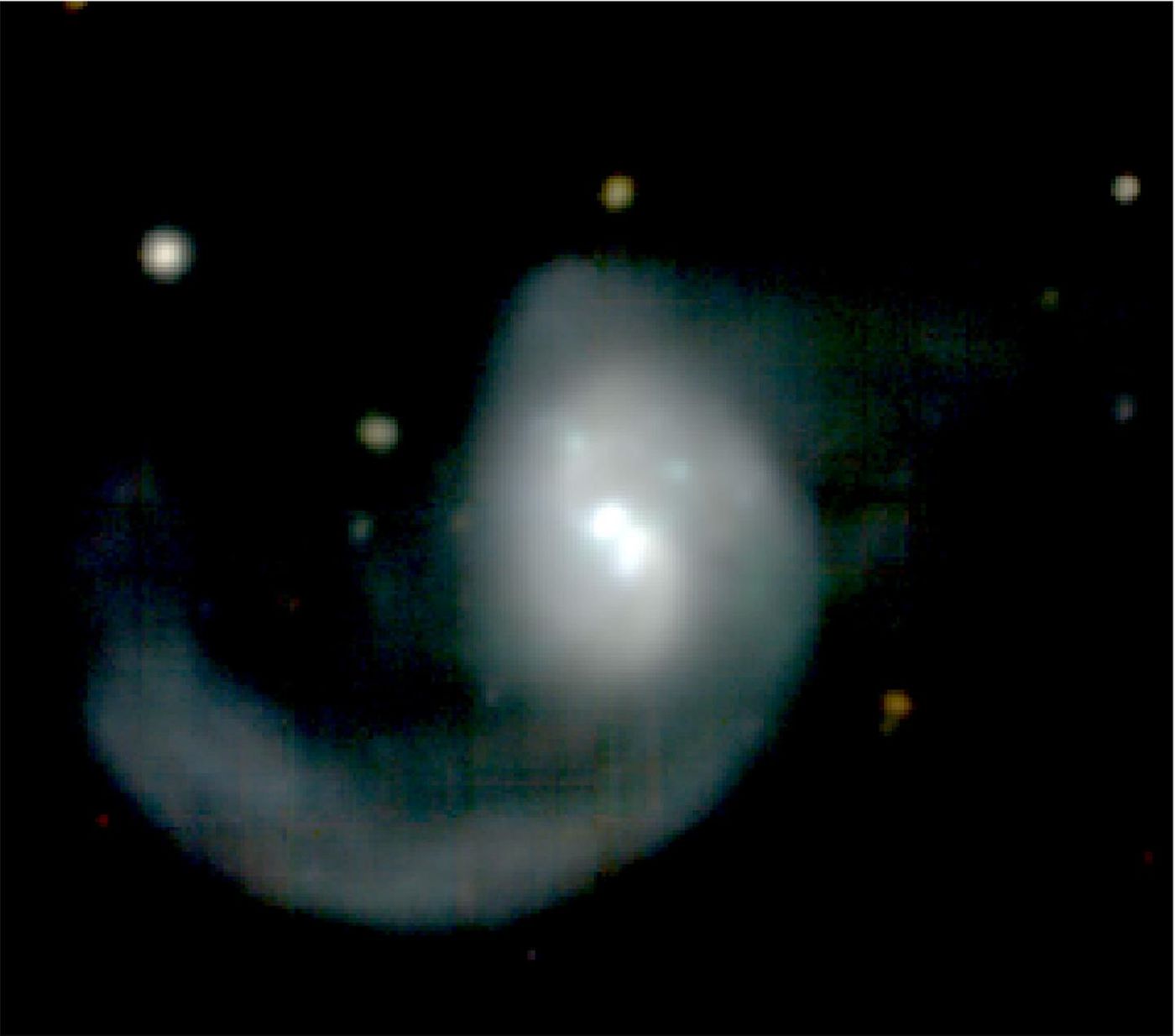The Eruption of an "Extra-Galactic Old Faithful"
We know that geysers like Old Faithful can erupt on a predictable schedule, and now researchers have learned more about an astronomical ‘Old Faithful’ that erupts light around once every 114 days. They have reported that the flashes are evidence of a tidal disruption event, in which a star gets so close to the gravitational pull of a black hole that pieces of it are torn away, generating what observers see as an erupting flare of light. The work is about to be reported in The Astrophysical Journal.
"It's really exciting, because we've seen black holes do a lot of things, but we've never seen them do something like this - cause this regular eruption of light - before," said study co-author Patrick Vallely, a National Science Foundation Graduate Research Fellow at Ohio State University. "It's like an extra-galactic Old Faithful."
Tidal disruption events usually end with the star destroyed, but this star appears to still be circling a supermassive black hole. Every time the star circles around and gets close to the black hole, bits of the star are pulled away into the black hole, which generates the flare of light. The flare is incredibly bright, about three times Jupiter’s size, and coming from a galaxy roughly 570 million light years from Earth. The black hole that’s creating the flares is thought to be twenty times as big as the one in the center of the Milky Way.
The periodic light outbursts are called ASASSN-14ko for the All-Sky Automated Survey for Supernovae, which is a network of 20 robotic telescopes.
"Knowing the schedule of this extragalactic Old Faithful allows us to coordinate and study it in more detail," said the first study author Anna Payne, a NASA Graduate Fellow at the University of Hawai'i at Mānoa.. Payne and others confirmed the finding and learned more about it, using data from NASA's Neil Gehrels Swift Observatory and Transiting Exoplanet Survey Satellite (TESS).
The flare was discovered on November 14, 2014. Some thought it was a supernova, which is a one-time event. But after Payne analyzed ASAS-SN data on the galaxy, she saw that there had been seventeen flares in a series, occurring about 117 days apart. These kinds of cyclical flares had never been seen before. Payne and colleagues prepared for the next flare, which they predicted would happen on May 17, 2020, and it was right on time. More were predicted and happened on September 7 and December 26, 2020.
The researchers also looked back to past flares and saw that a single flare was captured in detail on Nov. 8, 2018, as it rose from dormancy, peaked, and declined.
"TESS provided a very thorough picture of that particular flare, but because of the way the mission images the sky, it can't observe all of them," Vallely said. "ASAS-SN collects less detail on individual outbursts, but provides a longer baseline, which was crucial in this case. The two surveys complement one another."
"In general, we really want to understand the properties of these black holes and how they grow," said Chris Kochanek, Ohio Eminent Scholar, astronomy professor at Ohio State and co-lead of the ASAS-SN project.
These flares are predictable, so, "it gives us a truly unique opportunity to better understand the phenomenon of episodic mass accretion on supermassive black holes. The ability to exactly predict the timing of the next episode allows us to take data that we could not otherwise take, and we are taking such data already," added Kochanek.
Sources: AAAS/Eurekalert! via Ohio State University, NASA Goddard Space Flight Center, The Astrophysical Journal









